ENERGY SUPPLY/DEMAND
Many things in life happen in cycles. Our reliance on the various fuels in the last 150 years has also been a cyclic phenomenon, as shown below.
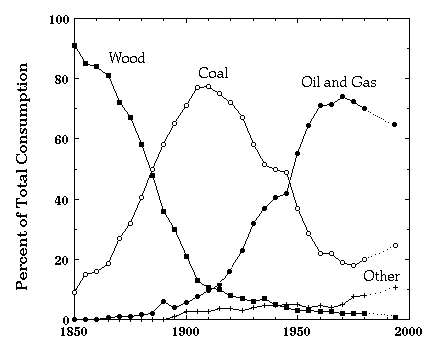
Is demise of oil and gas imminent? U.S. oil reserves are in short supply, but there is a fair amount of oil left elsewhere in the world. It is not clear what, if anything, will replace oil and gas in the coming decades. The contribution of nuclear energy is not as large today as were our hopes when President Eisenhower announced in 1954 that electricity from nuclear power "would soon be too cheap to meter". We have plenty of coal, but environmental concerns may prevent it from becoming the dominant fuel once again.
Since early 1960s, domestic production has not been able to keep up with oil consumption in the U.S. Oil imports in 1993 reached a 16-year high of 44%, with one half coming from OPEC nations and one quarter from Arab OPEC. The effect of politics and OPEC on the price of oil is also illustrated below.
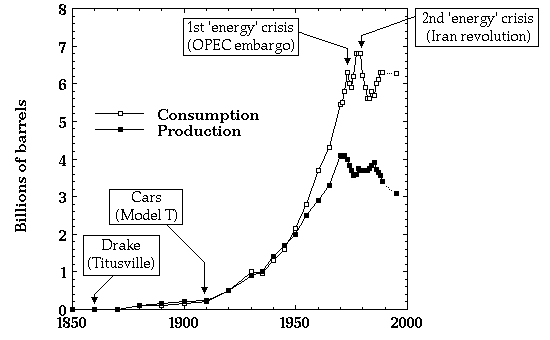
Crude oil (petroleum) was discovered in northwestern Pennsylvania in 1859. It was used primarily to produce kerosene, which in turn was used for lighting (instead of the less convenient candles and the more expensive whale oil). The tumultuous times that followed - including the rise of the Rockefellers and of Standard Oil (Exxon, Mobil, etc.) - are described in Daniel Yergin's "The Prize". But almost half a century was to go by before a really huge market developed for oil, and it wasn't for kerosene but for gasoline. In fact, had it not been for the massive production of automobiles (which began with Henry Ford's model T), Edison's discovery of the electric light bulb would have meant the demise of oil.
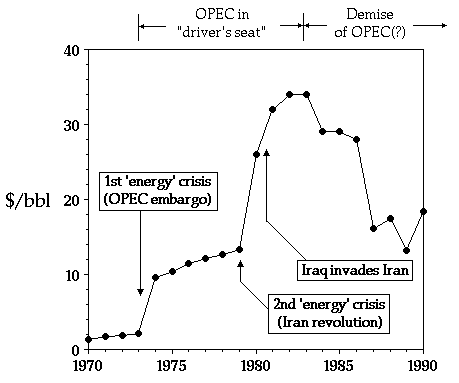
Exponential growth of oil production and consumption, either in the U.S. or elsewhere in the world, continued through the first seven decades of this century. Tremendous economic development, especially in the U.S., Europe and Japan, was facilitated by low oil prices. And then came the tumultuous seventies, when the Organization of Petroleum Exporting Countries (OPEC) controlled the oil market and decided on huge price increases.
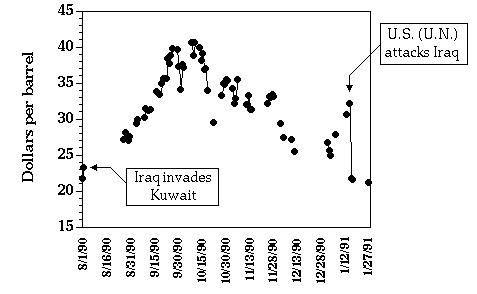
The precarious stability of oil prices, stemming from political instabilities in the oil-rich Persian Gulf area, is illustrated above for the period following the invasion of Kuwait by Iraq. More recently, the OPEC countries are having some difficulty in establishing (and respecting!) oil production quotas, which are supposed to maintain the price of oil at around $20/barrel. The OPEC situation in December 1992 is illustrated below.
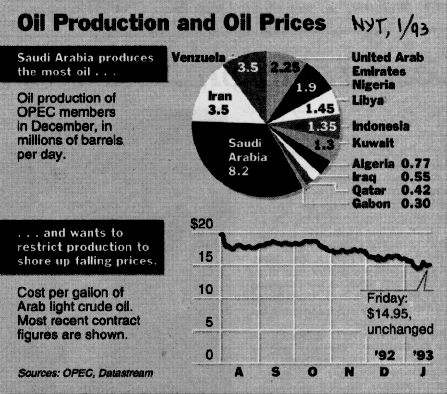
The most recent 'episode' in the Persian Gulf area is illustrated below. Idealists prefer to think that principles are guiding our actions in that area; cynics (or realists?) believe that it's oil.
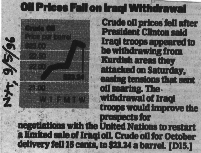
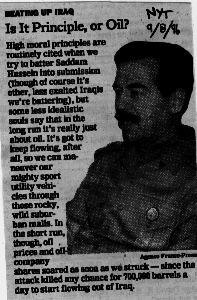
One way to minimize the impact of potential oil supply disruptions (if and when OPEC gets its tough act together again) is to stockpile oil in the Strategic Petroleum Reserve. Here is the amount of oil that has accumulated there over the years. The current target is 3 months worth of imports. (The U.S. consumes today about 17 million barrels of oil per day.)
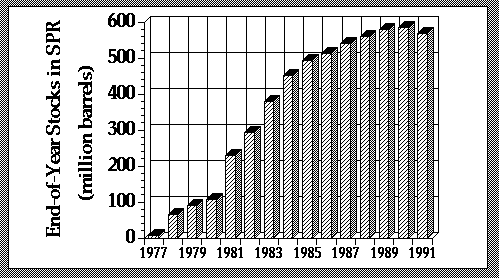
Another way - more effective in the long run, but more difficult to implement - is to listen to Amory Lovins. Amory Lovins, currently at the Rocky Mountain Institute, wrote a visionary book in 1977 (see Overview), but his vision (the so called 'soft path' to our energy future) - if technically feasible, and there are some doubts about that - is not likely to prevail in the current political and economic climate. On the other hand, the conventional 'hard path' is at an impasse. By and large, the public does not want new nuclear power plants. Increased reliance on coal may have serious environmental consequences. Yet we must build many new power plants in the coming decades. The dilemmas are great. Tough decisions will have to be made soon. The public at large can influence these decisions. It is more important then ever that we make INFORMED judgments and decisions regarding our energy future.
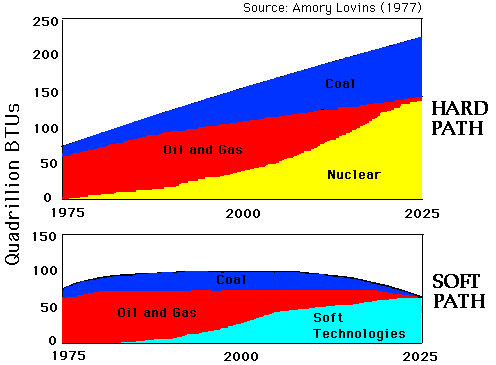
The last time decisions were made at the highest level was during President Bush's administration. They were based on the comprehensive National Energy Strategy, formulated by the Department of Energy (Jim Watkins, Secretary). The following provisions were included in this energy bill:
- new efficiency standards for a variety of energy conversion devices (e.g., lights, electric motors);
- tax incentives for developers of renewable sources such as solar and wind energy
- a requirement for government and private fleets to buy vehicles that run on fuels other than gasoline (CNG, primarily);
- expanding the Strategic Petroleum Reserve;
- removing restrictions on importing natural gas from Canada;
- turning the government's uranium enrichment program over to private firms;
- streamlining licensing for nuclear power plants, allowing a "one stop" permit for construction and operation;
- giving a tax break to independent oil and gas producers.
It seems unlikely that these provisions will affect drastically the energy supply mix in the U.S. in the next couple of decades.
Early on in his tenure, President Clinton proposed a BTU tax; Congress didn't accept it. So all we have so far from the current administration is the National Energy Policy Plan. This document is similar to the National Energy Strategy. (The latter document, published by the U.S. Department of Energy, is available in any good library.) It is mostly a 'wish list', with many small, significant initiatives and measures, but none that will likely make a major impact on the energy supply/demand balance in the next decade or two.
lrr3@psu.edu (last revised 9/9/96)









